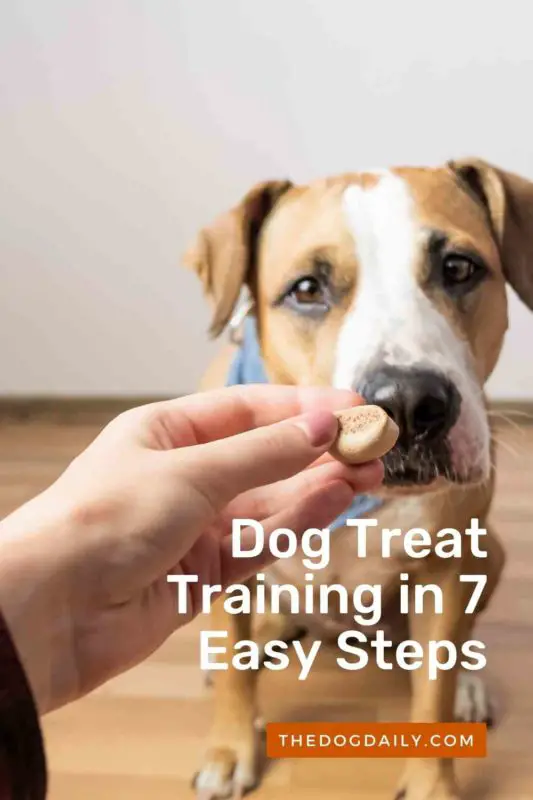What is Dog Treat Training?
At a recent dog training class in Northern California, the canine excitement was hard to contain. Tails wagged while eager barks filled the air. All dog eyes were directed toward the friendly trainers. Specifically, the dogs’ attention was riveted to what was on the waist of each trainer: a belt holding a pouch full of dog biscuits and treats.
The canines’ interest was understandable: Many biscuits and treats on the market today are made with high-quality, nutritious ingredients that your dog craves, such as cooked chicken and savory lamb. During training sessions, rewarding your dog with such a biscuit or treat shouldn’t be viewed as a bribe but rather as a non-threatening incentive your dog will understand. Food works wonders in breaking the language barrier between you and your pet. It’s like the universal “thank you” of the animal world.
PetSmart pet care manager Kenny Geisler of Daly City, Calif., is an expert on how to best use dog biscuits and treats during training sessions.
Here’s how you can follow his treat training advice:
1. Allow your dog to sample the treat
“Your dog needs to understand that a reward is coming,” says Geisler. To do this:
- Break off a small piece of a biscuit and give it to your pet.
- Place the rest of the biscuit in your treat pouch or pocket, making sure that your dog sees you doing this.
- Don’t repeat this initial sampling phase too many times, or else your dog will figure out that it can get something for nothing.
“The point is just to allow your dog to taste the reward, so he or she will wonder, ‘How do I get some more of that?’ But don’t overdo it,” adds Geisler.
2. Use small treats or biscuits
A recent scientific study tested whether dogs prefer a big hunk of meat to several smaller pieces. Quantity won. Similar tests have been conducted with birds, which also gravitate toward multiple food items, even if the edibles matched up evenly in terms of overall calories and nutrition. Break larger treats into pieces, advises Geisler, or purchase smaller-sized biscuits and treats for your regular training sessions.
3. Vary the flavors
Canines are smart, curious animals, so they like to spice up their lives with variety from time to time. The same holds for people. “Giving your dog the same biscuit or treat every day is comparable to a spouse taking a husband or wife out to dinner each night, but they always go to the same place, and there is only one thing on the menu,” says the PetSmart dog lover. After a while, the reward loses its value. If you change the flavor every so often, you will pique your dog’s curiosity and stand a better chance of holding its interest.
4. Be timely with food rewards
Geisler recommends that all treats are given within one to two seconds of your dog following the command. “Any later and your dog may not link the food to the desired action,” he explains. Also, take care not to reward too quickly. For example, before your dog has finished doing whatever is asked of it. If your dog is about to lie down and is rewarded midway, it may think you want it to crouch! That’s happened before to perplexed PetSmart training session participants.
5. Alternate food rewards with petting and verbal praise
If you always offer food when your pal is behaving, it could become spoiled and forever expect such treatment. This can be particularly awkward when you don’t happen to have any biscuits or treats, such as when you are out on the town with your pet. “Change up your reward system,” says Geisler. “Give affection and verbal praise one day; food treats the next.”
6. Don’t vary treat quality
Professional dog trainers often learn about negative versus positive contrasts. You never want to follow a positive with a negative. “For example, you shouldn’t give your dog grilled steak for five days and then wonder why he doesn’t behave when you reward him with a stale dog biscuit,” the pet care manager says. Given the variety and quality of commercial pet foods, it’s better to stick with fresh biscuits and treats instead of thinking you’ll motivate your dog more with expensive human food. That may work in the short run, but you could regret the decision later.
7. Reward your dog with a “jackpot” when deserved
“Jackpotting,” explains Geisler, “means to give your dog a huge reward when she does something over-the-top amazing.” For such special moments, you needn’t worry about breaking larger biscuits into pieces or holding back. “Dogs understand big versus small
incentives.” Just be careful not to exceed the recommended feeding amount listed on the biscuit or treat package. For regular-sized biscuits, usually, that means no more than three to four daily.
A bonus to treat training is that many treats on the market now target health issues, such as weight gain and tooth problems. Some treats even help to promote a clean, healthy mouth and fresh doggy breath. You will appreciate this when the training session is over, and your grateful dog rewards you with a big lick on your face.
Article written by Author: The Dog Daily Expert

